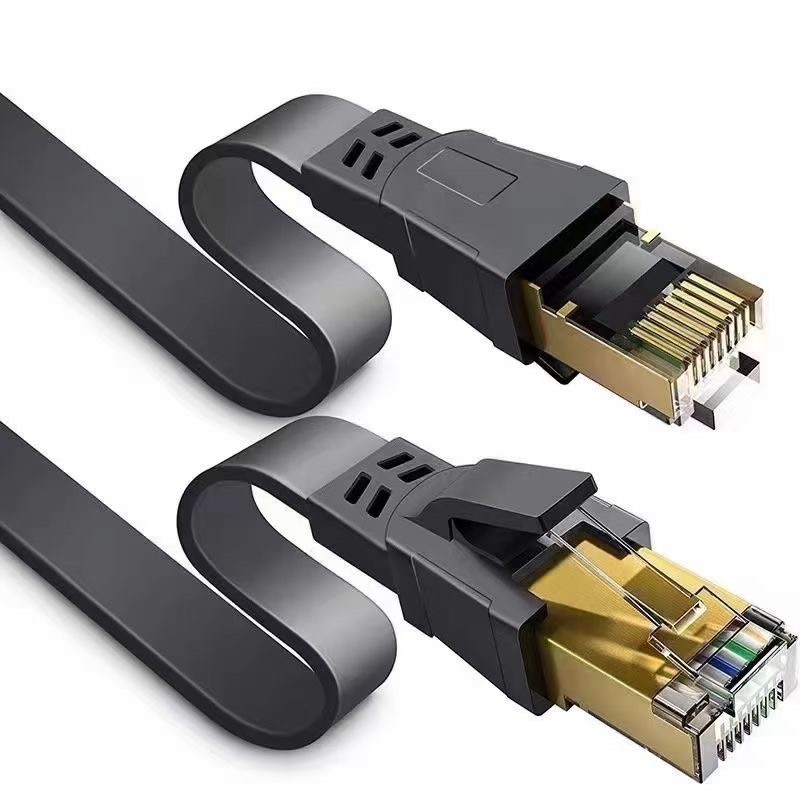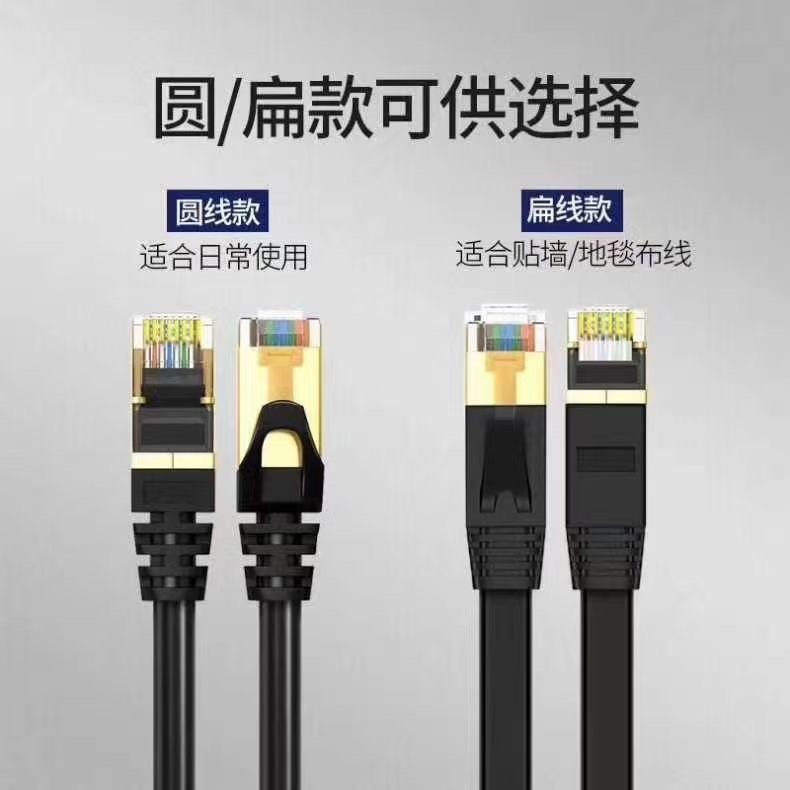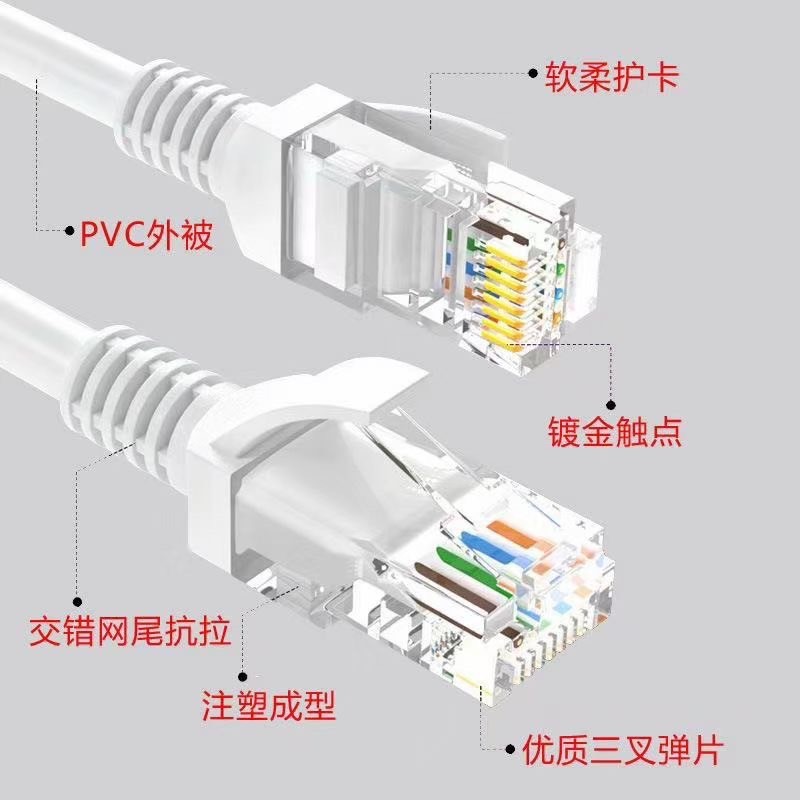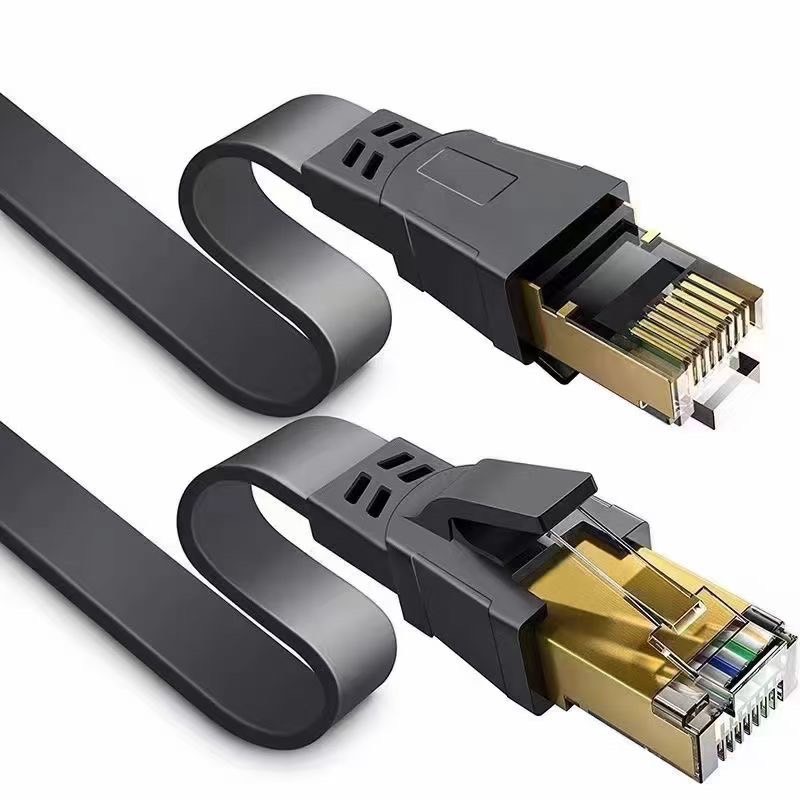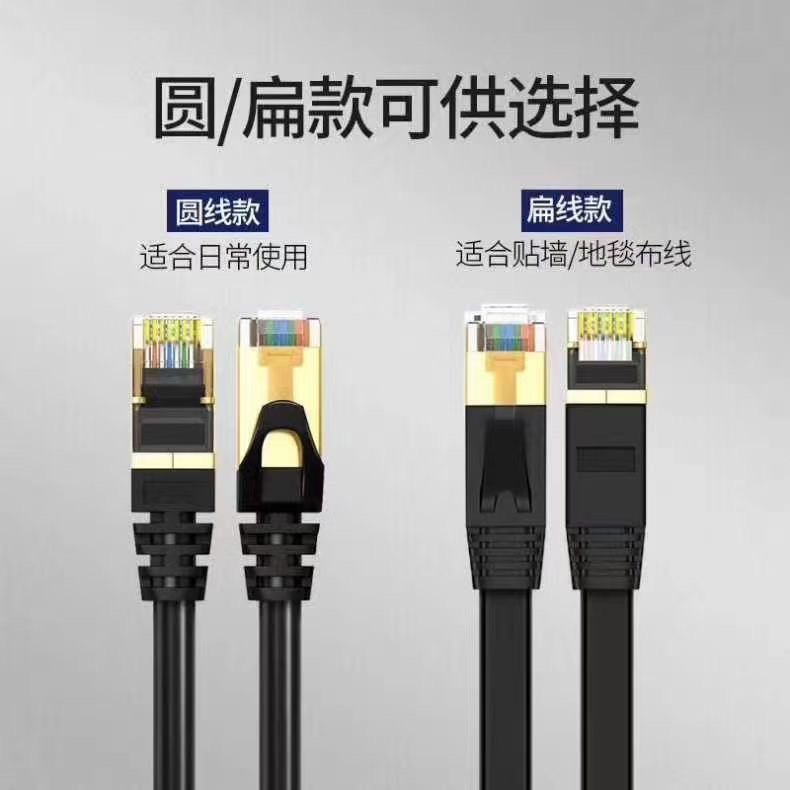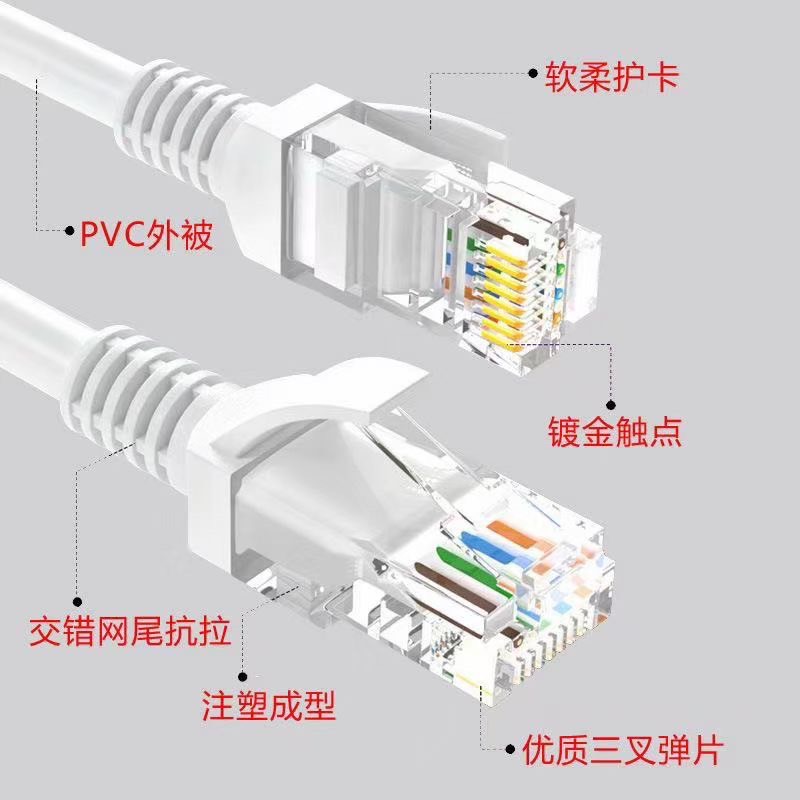Product Description :
1.The level of the network line: (the larger the number, the higher the level)
Network cables from Cat. 5 to Cat. 8 represent different standards and performance levels, each with its own unique characteristics.
Here is a brief description of each level:
1. Cat. 5: Cat. 5 is one of the earliest standards and supports data transfer rates up to 100 Mbps. It is mainly used in general home and small office networks.
2. Cat. 5e: Cat. 5e is an enhanced version of Cat. 5, supporting data transmission rates up to 1000 Mbps (1 Gbps). It provides better anti-interference performance and is suitable for daily home and business users.
3. Cat. 6: Cat. 6 supports data transfer rates up to 10 Gbps and is typically used in environments that require higher bandwidth, such as large enterprises, data centers, and demanding multimedia applications.
4. Cat. 6A: Cat. 6A is an upgraded version of Cat. 6, supporting the same 10 Gbps speed but maintaining stability over longer distances. It is mainly used in large data centers and applications requiring high performance.
5. Cat. 7: Cat. 7 supports data transmission rates up to 10 Gbps and introduces shielding technology to reduce external interference. It is suitable for environments with strict requirements on signal quality and stability.
6. Cat. 8: Cat. 8 is the latest standard, supporting data transfer rates up to 25 Gbps or 40 Gbps and operating at higher frequencies. It is mainly used in large data centers and high-density network deployments to meet the demand for extremely high speeds.
When selecting a network cable, you should evaluate your actual needs and expected usage environment. A lower Cat level may be enough to meet the needs of general homes and small offices. For applications that require higher
performance, you can consider choosing a higher-level network cable. The speed of the network cable must match the speed of the fixed network. Assuming that the home network is only 24M-100M, and there is no current plan to increase
the speed beyond 1G, then choosing Cat. 6 is enough. If you are decorating a new home, it is recommended to directly use Cat.
6A network cables, because the network cables buried in the wall will last for more than ten years. Changing the cables is a big project, and most people are not willing to replace them after installation.
2. Functions and features of network lines:
1. Transmission speed: The transmission speed of the network cable. The network cable can support high-speed data transmission,
ensuring that users have faster connection speeds on the Internet. The transmission speeds of different levels of network lines are measured in megabits per second (Mbps) or bits per second (Gbps). For example, Cat 5e usually supports data transfer rates up to 1000 Mbps (1 Gbps), while Cat 6 can provide higher rates, reaching 10 Gbps. As for Cat 6a, it can support speeds up to 10 Gbps while maintaining high performance over longer distances.
2. Stability and reliability: The stability of the network line is crucial to maintaining the stability and reliability of the connection. Every time you want to buy a network cable, you will be confused by the different grades of network cables. This is crucial to avoid connection interruption or packet loss, especially in applications that require high reliability, such as in offices or gaming environments.
3. Anti-interference: Talk about the anti-interference performance of the network line. Some network cable designs can effectively reduce external signals or electromagnetic interference, ensuring that data transmission is not affected by external influences. This is especially important when using network equipment in busy environments.
4. Scope of application: Different levels of network cables have different scopes of application, such as whether they are suitable for home, office or special application scenarios. Some network cables may be suitable for long-distance connections, while others are suitable for short-distance connections.
5. Standards and Certifications: If the network cable meets specific standards or is certified. For example: the network cable complies with Cat 5e, Cat 6, Cat 6a and other standards, or has obtained relevant industry certifications. What is more special is the Cat. 7 network cable, because the Cat. 7 network cable is not based on the network TIA/EIA-568.B/.C/.D specifications developed by TIA/EIA (American Communications Industry Association/Electrical Machinery Industry Association). Its specification ISO/IEC 11801 Class does not formulate a Cat. 7 standard specification for RJ45 connectors, and test instrument manufacturers (such as FLUKE) do not have a standard basis to launch corresponding instruments and equipment for testing Cat. 7, making it difficult for users to target Cat. Standard testing at a rate of 7
6. Durability: The durability and quality of the network cable. Network cables manufactured using high-quality materials and processes are more resistant to physical damage and daily wear and tear, extending their service life.
7. Flexibility and easy installation: The high-quality network cable design is soft and easy to install. Flexibility and ease of installation can make network cables easier to adapt to different environments and cabling needs.
The grades of network cables are usually distinguished by Cat (Category) standards, such as Cat 5e, Cat 6, Cat 6a, etc. Each grade of network cable
has different characteristics and supported speeds. Higher-rated network cables generally support higher data transfer rates. The speeds supported by different levels of network cables. Cat 5e typically supports data transfer rates up to 1000 Mbps (1 Gbps), while Cat 6 is capable of even higher rates, up to 10 Gbps. As for Cat 6a, it can support speeds up to 10 Gbps while maintaining high performance over longer distances.








